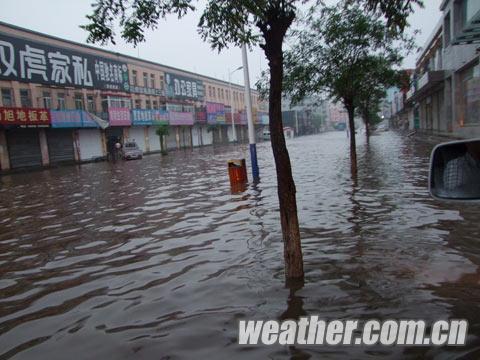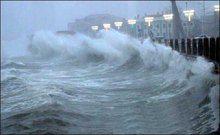Flood and drought disasters can be divided into flood, water logging, drought and other disasters.
The narrow definition of flooding usually refers to the outbreak of the rivers and lakes or mountain ditch flood, and a great loss of human property will be caused by its great depth and velocity. With the social development, people have expanded their understanding of the disasters'impact to the living environment and the ecological environment.
The broad definition of flooding expands the occurring locations of flooding to the coastal area(storm surges) and expand the activities for water to water ice two-phase flow (ice flood) and water sand (stone) two-phase flow (mudslide). Therefore, the causes of floods can be divided into 4 categories.
The heavy rainfall disasters
This kind of disaster refers to the flood caused by excessive rainfall; it can cover the whole disaster area and often happens in the water basin of Northeast China.A small flooding are usually caused by short duration rainstorm in the mountainous area in the form of the deluge. A flooding in a middle-scale basin is often caused by a large area of the rainstorm. Generally speaking, a big flood is caused by 2 times of a large area of rainstorms.

The debris flows disasters
A large amount of products of weathering which have steeped in water after a heavy rainfall rapidly move along slopes under the resultant force of gravity and water, and end where the mixed of rocks, sands and water stops flowing-this is the process of forming a debris flow.The difference between debris flow and high silting flow is that the former moves under the resultant force of gravity and water, while the latter moves main in the action of water.

The debris flow features its mixed of water and sands, its suddenness, and its ferocity. Because of these features, the debris flow often brings great damage to the villages alongside. The disaster area of debris flow is smaller than that of heavy rainfall but makes more damage to people than rainfall does.
The debris flow in Northeast China mainly occurs in the south of Liaoning Province and the hilly area of Liaodong, and occurs sporadically in the area of Changbai Mountain in a small scale.
The ice flood disasters
The ice flood occurs under the resultant force of water and ice. This kind of disaster can not only make great damage to people as a heavy rainfall does, but the ice can also collide with villages and causes damage.

Ice flood disasters in Northeast China mainly occur in the northern part of Heilongjiang Province, especially in the upper reaches of the Heilongjiang River, the upper reaches of Nenjiang and the lower reaches of the Songhua River, and also occur in the Eerguna River on the right side of the branch.
The storm surges disasters
The storm surges disaster is caused by the strong cyclone system in coastal areas, tides under sustained winds and strong wind waves. It sometimes combines with the top-lifted flow and makes greater damage. Storms can be divided into 2 types: typhoon storms and extratropical storms.

If the storm surges occur with the astronomical tides, its damage will be exacerbated--higher tides and larger waves.
The difference between the surge disaster and the other disasters is that the former lies in the source from the sea and can cause large waves with 8-metre height. A rainstorm in the estuary will make greater damage if it is lifted by the backward seawater.
Storm surge disasters in Northeast China often occur in Yingkou, Dalian and Dandong areas, and can cause heavy casualties and property losses.
The information is provided from Disaster Risk Reduction Knowledge Service.
Comment list ( 0 )
